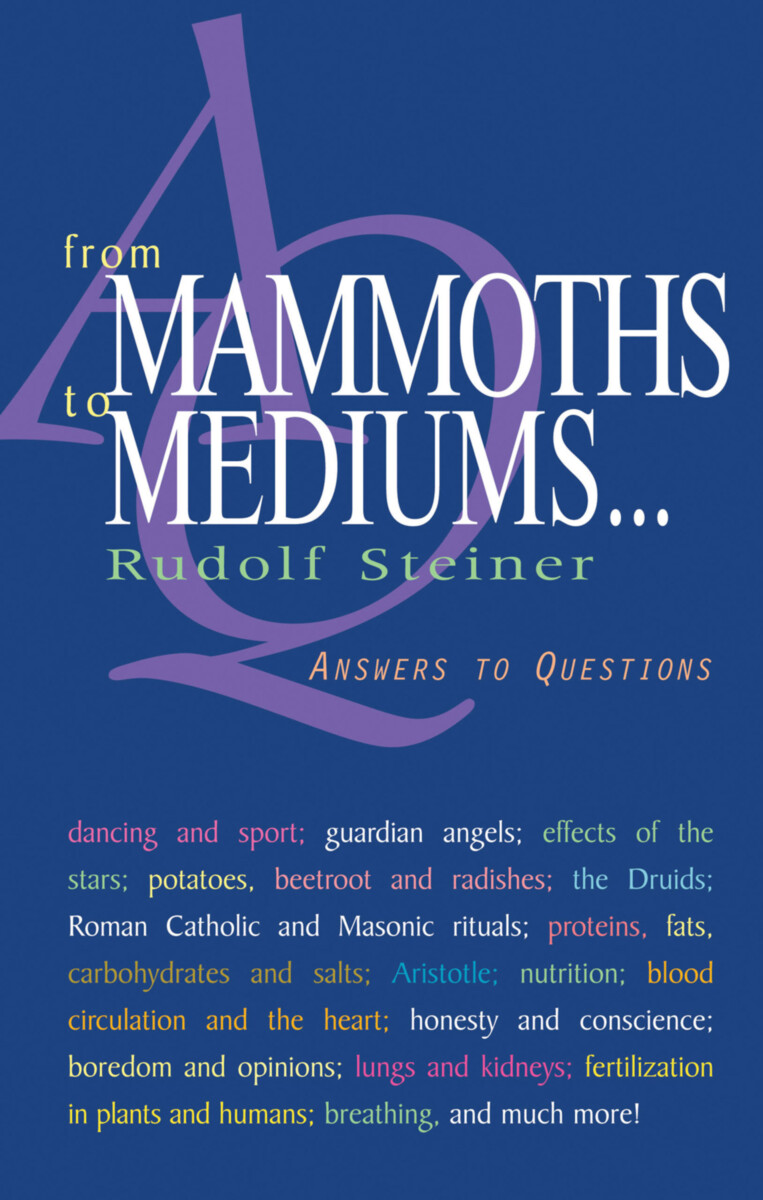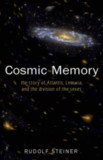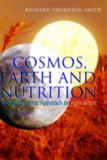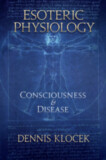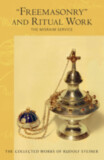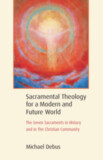- Publisher
Rudolf Steiner Press - Published
1st February 2002 - ISBN 9781855840782
- Language English
- Pages 328 pp.
- Size 5.5" x 8.5"
16 discussions with workers at the Goetheanum in Dornach,
May 30 – Sept. 22, 1923 (CW 350)
“[These discussions were] intended for a particular group of people, and Rudolf Steiner spoke off the cuff, in accord with the given situation and the mood of the workmen at the time...the very way in which he spoke had a freshness and directness...it has a directness and vitality.” — Marie Steiner
The remarkable discussions in this volume took place between Rudolf Steiner and workers at the Goetheanum in Dornach, Switzerland. At Rudolf Steiner's instigation, the various topics were chosen by his audience. He took their questions and usually gave immediate answers. The astonishing nature of these responses—their insight, knowledge, and spiritual depth—gives testimony to his outstanding ability as a spiritual initiate and profound thinker. Accessible, entertaining, and stimulating, the records of these sessions will delight anyone with an open, unbiased mind.
In this collection, Rudolf Steiner deals with topics ranging from mammoths to mediums! His discussions include dancing and sport; guardian angels; effects of the stars; potatoes, beetroot and radishes; the Druids; Roman Catholic and Masonic rituals; proteins, fats, carbohydrates, and salts; Aristotle; nutrition; blood circulation and the heart; honesty and conscience; boredom and opinions; lungs and kidneys; fertilization in plants and humans; light and color; and the nature of breathing.
This volume was originally published in German as Rhythmen im Kosmos und im Menschenwesen: Wie kommt man zum Schauen der geistigen Welt? 3rd edition (Rhythms in the cosmos and in human beings: How does one come to see in the spiritual world? [CW 350]).
C O N T E N T S:
Publisher’s Foreword by Sevak Gulbekian
1. Repeated lives on Earth. Physical exercises, dancing, and sport.
2. How etheric and astral principles work in human beings and Earth.
3. Blood circulation and the heart’s movement. Perceiving spiritual things through the eye’s lens.
4. Effects of light and color in earthly matter and in cosmic bodies.
5. How our guardian angel works.
6. Deeper reasons for the disastrous World War I.
7. Effects of relative star positions on the earth and on human beings.
8. Developing independent thinking and the ability to think backward.
9. Creating boredom artificially. Opinions formed in the physical world are reversed in the other world.
10. Developing inner honesty.
11. Being at home in the outside world. Nutrition. Potatoes, beetroot, and radishes.
12. Human and cosmic breathing. Earth breathes light. Plant and human fertilization.
13. Development of conscience in human evolution. Unbornness and immortality. Aristotle and Catholicism.
14. Lung knowledge and kidney knowledge.
15. Druid wisdom. Mithraic rites. Catholic ritual. Masonic rites. The Christian Community ritual.
16. Nutritional roles of protein, fats, carbohydrates, and salts. Potato diet. Opponents of Anthroposophy.
Translator’s Note
Notes
Rudolf Steiner
Rudolf Steiner (b. Rudolf Joseph Lorenz Steiner, 1861–1925) was born in the small village of Kraljevec, Austro-Hungarian Empire (now in Croatia), where he grew up. As a young man, he lived in Weimar and Berlin, where he became a well-published scientific, literary, and philosophical scholar, known especially for his work with Goethe’s scientific writings. Steiner termed his spiritual philosophy anthroposophy, meaning “wisdom of the human being.” As an exceptionally developed seer, he based his work on direct knowledge and perception of spiritual dimensions. He initiated a modern, universal “spiritual science” that is accessible to anyone willing to exercise clear and unbiased thinking. From his spiritual investigations, Steiner provided suggestions for the renewal of numerous activities, including education (general and for special needs), agriculture, medicine, economics, architecture, science, philosophy, Christianity, and the arts. There are currently thousands of schools, clinics, farms, and initiatives in other fields that involve practical work based on the principles Steiner developed. His many published works feature his research into the spiritual nature of human beings, the evolution of the world and humanity, and methods for personal development. He wrote some thirty books and delivered more than six thousand lectures throughout much of Europe. In 1924, Steiner founded the General Anthroposophical Society, which today has branches around the world.


